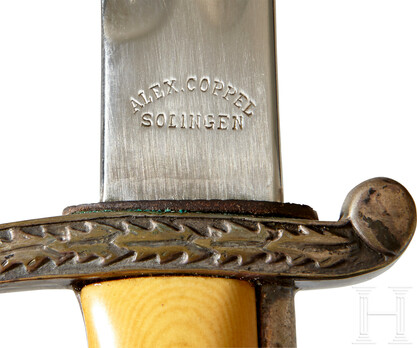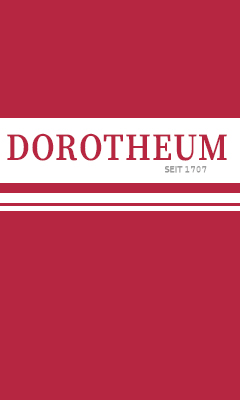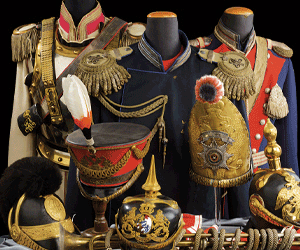Diplomatic Corps Dress Bayonet
SKU: 34.GOR.04.03.001
Estimated market value:




Estimated market value:
Attributes
History
The Diplomatic Corps was made up of officials (civil servants) of the Foreign Ministry. This ministry was taken over in 1938 by newly appointed Foreign Minister Joachim von Ribbentrop who, for the first time, introduced specific Diplomatic Corps uniforms. Prior to 1938, there had been no defined uniforms for members of the Foreign Office.
Prior to the war, the Foreign Ministry was heavily involved in the annexation of Austria and the Sudetenland. During the war, some conquered territory, especially in Poland, was incorporated into the German Reich, while other territory was merely occupied. These countries, while officially still independent, were in reality administered by German officials of the Diplomatic Corps, and in some cases also German-approved puppet governments.
It is important to remember that the officials who served within the borders of the German Reich weren’t of course part of the Foreign Ministry, but rather of the Ministry of the Interior. However, the officials of both these ministries wore nearly identical uniforms.
Officials of the Diplomatic Corps were distinguished by rank as well as their educational level. The latter determined which kind of “Laufbahn” (career) an individual was able to choose. The “Höherer Dienst” (Higher Career) required a university degree, the “Gehobener Dienst” (Elevated Career) required a college degree, the “Mittlerer Dienst” (Middle Career) required a highschool degree, and the “Einfacher Dienst” (Lower Career) required a grade school education, to put it in a simplified way. Additionally, the Higher and Elevated Careers included several different pay groups.
Uniforms for the Diplomatic Corps were first introduced in 1938. They underwent near continuous modification between then and 1943.
The Diplomatic Bayonet was only permitted for wear as a dress bayonet, in fact, it was not manufactured with the capability of attaching to a rifle.
The handle of the bayonet is made up of the pommel, the grip, and the crossguard. The pommel has the form of a stylized eagle facing to the viewer’s left. The grip is composed of imitation ivory. The crossguard has an “S” shape, and it is decorated with overlapping, engraved oak leaves.
The blade is composed of nickel-plated steel, and the ricasso may display the manufacturer mark/logo.
The scabbard is made from brown leather with two nickel-plated fittings, one at the scabbard throat (throat piece/locket) and the other at the bottom (toe piece/chape). The throat piece has a stud to facilitate the attachment of the frog.
The frog is composed of matching leather.
The portapee/sword knot is generally made from metallic silver-coloured (aluminum) bullion wire.

Versions
$17,500 USD
250mm (Blade); 400mm (Bayonet in Scabbard)


Comments
Sign in to comment and reply.


Scroll Top